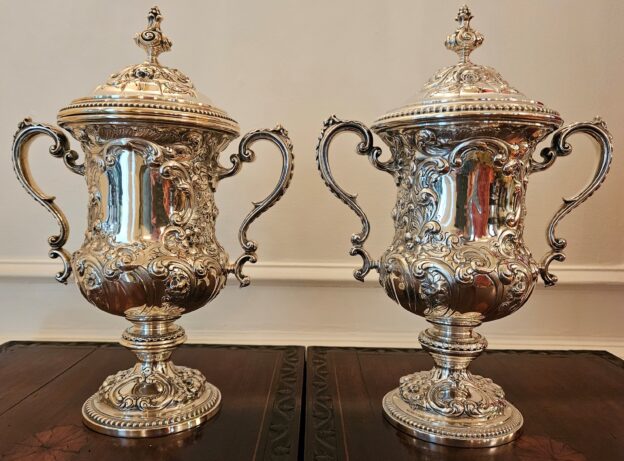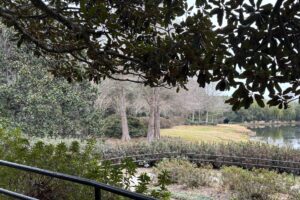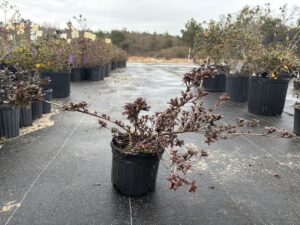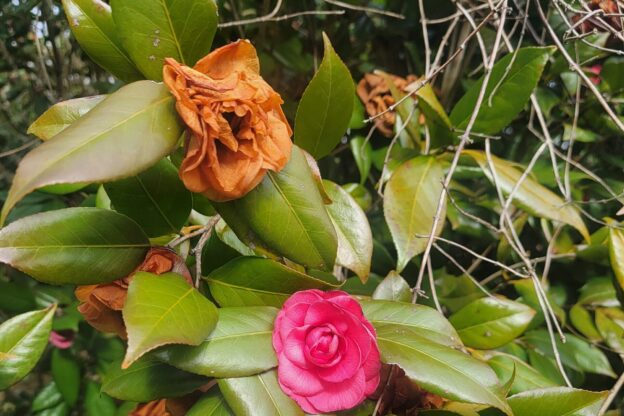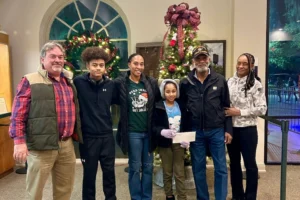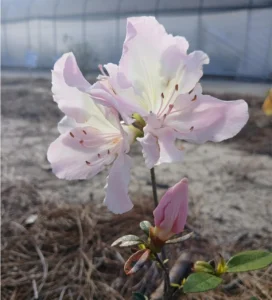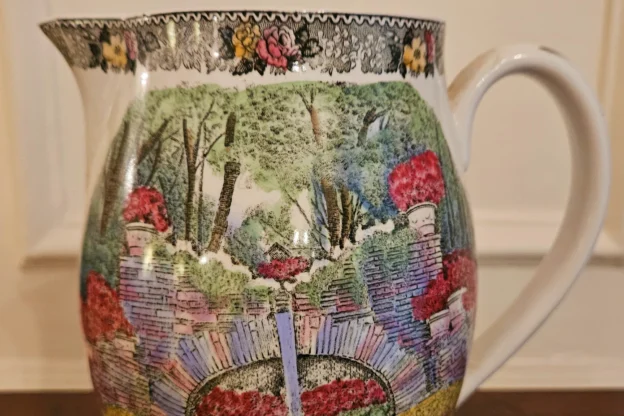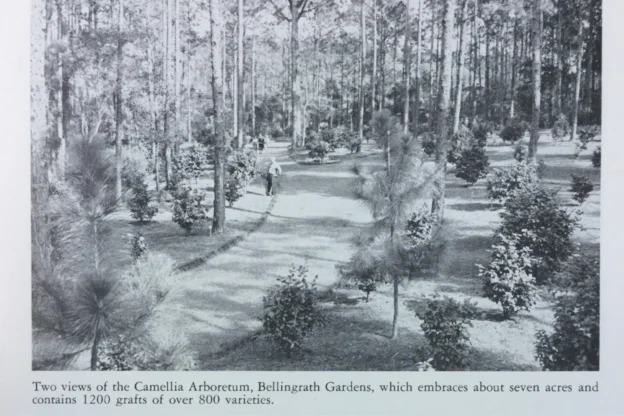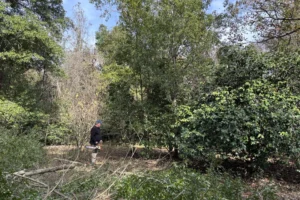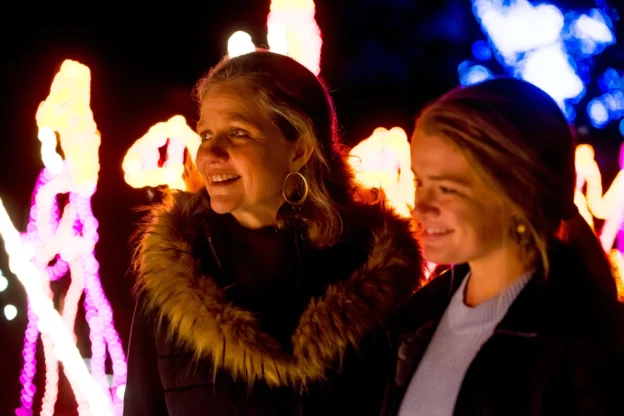Conservation and Sharing
Bellingrath Gardens Azalea core collection is saving plants from extinction! Have you noticed the selection of plants at your local garden center or your favorite mail order nursery changes from year to year? New varieties are introduced every season while other varieties vanish—where did they go? Unlike native plants, cultivars of garden origin are not perpetuated naturally. Once a plant of garden origin is “out of print” so to speak, its clock is ticking. Although no perennial plant has ever died of old age (technically), no single plant lives forever. Asexual propagation (meaning “reproduction without sex”) literally resets that clock (via rooted cuttings, grafting, divisions, and tissue culture.) Parenthesis aside, propagation underscored by the sharing of those plants permits a plant to live beyond the lifespan of the original “mother” plant and initial clonal distributions. Long story short, if no one is hacking off pieces of azalea clones and making rooted copies of them, then that cultivar will inevitably go “extinct”. Furthermore, let’s not forget to mention De facto extinction. If a clone grows without the affirmation of a label, or garden record, or anyone’s memory of its name, that cultivar is essentially extinct unless someone rediscovers it. We all know how often we lose the labels on plants and forget their names.
A private plant collection rarely outlives its collector; and private gardens come and go, it’s floriferous treasures usually falling victim to blind clear cutting every time the property changes hands. Conversely, the Bellingrath azalea core collection will seek out, acquire, grow, document, re-identify, and propagate hundreds of varieties that will otherwise likely go extinct. The permanence of Bellingrath Gardens and Home is one of our greatest foundational assets. Serving as a secure repository for germplasm (a fancy way to say living plant collection), Bellingrath Gardens is looking forward to crossing the 100-year threshold with youthful exuberance. Time is on our side.
Garden Aesthetics and Landscape Use
Now let’s talk about those big honkin’ flowers! As a public garden, Bellingrath is in the business of showing off as many big honkin’ flowers to as many people as possible. But now we’ve got a problem…albeit good problem: with the Bellingrath azalea core collection having already exploded to over 400 varieties, which ones are we going to use and where!? They all look so great! As a formally trained (and I guess informally trained) garden designer, there are several factors that I will consider while evaluating the side-by-side performance of our evergreen azaleas—basic characteristics that will guide our roster decisions as we put our team of big honkin’ flowered azaleas onto the visitor field of view.
Shape, size, and quantity
We want to display (and by display, I mean shamelessly show off) as many varieties of our evergreen azaleas as possible. The most efficient way to display lots of different clones over a defined space is by planting one of each type. Typically, an individually planted evergreen azalea is best described as a garden meatball. In garden design, an evergreen sphere is a most aristocratic shape…the most difficult to pare with other types of herbaceous and woody plants. In short, an evergreen azalea, singularly planted will often default to being the center of attention—it resists blending in, even when not in flower. So, when planted in drifts of one, expect to see our evergreen azaleas awarded prominent placement in Bellingrath’s garden beds.
When used in mass, these same azaleas weave together, acting as a tall groundcover. Yes, a ground cover! Question: What is the definition of a groundcover? Answer: a plant that covers the ground. Evergreen azaleas are typically densely branched, crowding out (or at least obfuscating) anything planted directly underneath. Bellingrath Gardens offers many stunning vistas, where a mass of azaleas will trigger a massive flower display for 3 weeks; and unlike when planted singularly, blend in to the bigger picture when not in flower.
So when addressing our delightful dilemma in terms of size, shape, and quantity, prepare to blown away: from any distance by the big honkin’ flowers of the many, and at close range by the big honkin’ flowers of the one. Bellingrath Gardens is blessed to have the acreage necessary to accommodate so many different kinds of azaleas!
Form and function
If every evergreen azalea, regardless of floral show, was expected to serve the same aesthetic garden function, our cheerful conundrum would cease to be cheerful. If every evergreen azalea looked exactly the same when not in flower, the only differentiating characteristic we’d have to choose who goes where would be the flower—and primarily the color of the flower. There just wouldn’t be enough “uniqueness metrics” defining hundreds of azalea clones to solve for “x”. Thankfully, in addition to garden meatballs, there are short ones/tall ones/round ones/skinny ones/fat ones. There are azaleas with tiny leaves—there are azaleas with shiny leaves. Some azaleas will tumble over a stone wall, some azaleas tuck into a tiny crack in a stone wall. Some azaleas beg for the close attention of a macro lens–some azaleas would rather show off their long game from across Bellingrath’s Great Lawn. There is an azalea answer for garden question. Bellingrath doesn’t have all the answers, but if asked what our favorite azalea is, we currently have at least 400 different answers!

Big Honkin’ Flowers:
Ok…one might think I’m going to talk about the differences in flower color, size, and overall display. Yes and no.
First the “yes”. The most common question we get asked about our azaleas is when is peak bloom. You see, Bellingrath employees use a calendar to precisely plan and coordinate our garden happenings. Unfortunately, our Azaleas do not use any such calendar—consistently failing to even check their inbox. We’d love to be able to tell you exactly what time the azaleas have scheduled their main event; but at least we know from experience those big honkin’ flowers will show up for one to three weeks–late February into March . That’s the window as it stands now, because Bellingrath’s current azalea display is composed primarily of southern indica hybrids. But here’s the really cool part…one of the most understated and yet most exciting aspects of our growing azalea core collection is that by diversifying the genetics represented by so many different hybrids and hybrid groups, we will be vastly lengthening, augmenting, and defending a peak season of bloom—possibly extending a full month later into mid-April and beyond. Just wait until the Satsuki hybrids come marching in near the end of March! Diversified genetics means new colors, new spots, new streaks, and new color combinations! A broader flowering window puts the beauty of the peak display season out of reach of almost any single weather event that might otherwise sabotage a narrow peak flowering event. We can’t wait to get these new varieties planted into the garden. Ahhhhh!!!
And now, the “no”. One reason (and there are many reasons) I love being a public gardener is the opportunity to see the garden through so many sets of eyes. I truly love embracing our guests’ reactions to the dynamic beauty of Bellingrath Gardens. I’ve learned everyone sees something different when looking at the same flower. Huh, go figure. For me, flowers are the culmination of a plant’s success. Flowers are a resplendently wrapped gift offered back to the garden saying “thank you” for providing such a generous place to live. Flowers are a vivid contribution to the collective garden aesthetic. Flowers provide a fleeting opportunity for endless observation… challenging the very limits of the five senses. I feel comfortable assuming pretty much everyone reading this knows what an azalea flower looks like… and have likely been impressed by those big honkin’ flowers in a way that is unique to the eye of the beholder. So no, my vocabulary is simply depauperate in any attempt to speak for a flower that has something it would rather share with you personally. As the Bellingrath Azalea Core Collection spills into the garden, we invite you to come hear for yourself what those big honkin’ flowers have to say to you. And we, in turn will say thank you for your continued support of the gardens—for helping us advance Bessie Bellingrath’s artistry and genius as we culminate our first century as a public garden renowned as a charmed spot for so many plants and people to thrive.
Visit and Connect with Us


